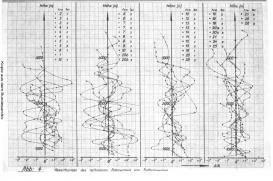Few written traces remain of the personal life of Melitta Schiller-Stauffenberg, a researcher in technical physics and test pilot for the Luftwaffe whose father was born Jewish, whose husband Alexander Count Stauffenberg was a prominent member of the poet Stefan George's circle, and whose brother-in-law, Claus Count Stauffenberg, was the main protagonist in the July 20, 1944 attempt to assassinate Hitler. Family members' and other contemporaries' recollections complement the sparse accounts left by her own hand. This problematic historical record has left room for politically charged biographical controversies regarding Schiller-Stauffenberg’s role in the deutschnational resistance movement as well as for fictional accounts dramatizing questions of her national and ethnic identity, victimhood, or heroic agency.
My study takes as its starting point the fragmented historical record of Schiller-Stauffenberg’s life, and uses it to examine the genre of biographical writing itself as well as the autobiographical construction of experience that informs it. I trace the relation between different forms of sources, ranging from traditional textual experiential sources (e.g. diaries and letters) to the increasingly codified forms of self-articulation that were developed in the context of aviation research, and extensively debated in terms of “subjective judgment” versus “objective measurement”: hand-written records, checkboxes, retrospective reports, body-force writers. Taking seriously the material continuities between these many different forms of producing accounts of the self produces resistances to the interpretative patterns of Schiller-Stauffenberg’s life as they have primarily been formulated in terms of the key concerns of twentieth-century German historiography. In addition, it also adds to our understanding of the role of technology in the transition from the Weimar years to National Socialism an example of its role in reframing one technical practitioner's account of herself.

